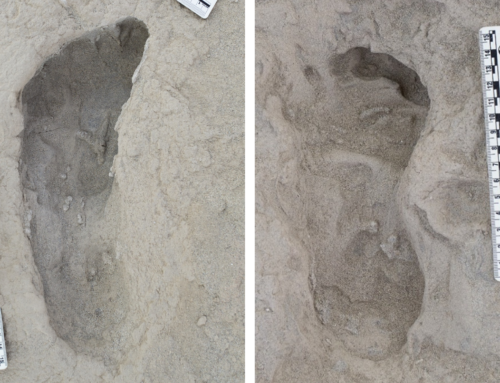Hello! My name is Owich and I am an anthropology graduate from the University of Nairobi.
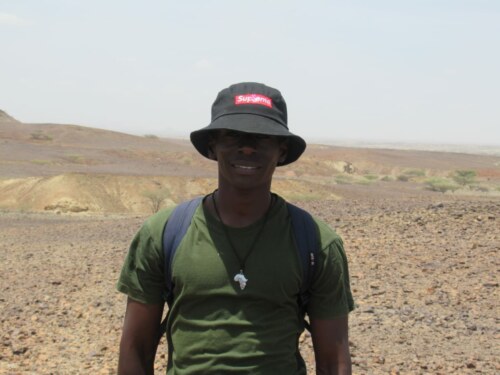
We began our second week of geology with a morning classroom session with Dr. Gathogo taking us through the short Cretaceous window, and reconstruction of the Turkana basin geography and particularly the Cenozoic (Age of mammals) rich-sediments. In summary, we learned about the tectonic events that led to the formation of the basin. In the afternoon, we had a lab session dedicated to identifying and making comparisons between the volcanic ash samples collected from ‘The New Hominid Site’ in South Turkwel, and the ash collected from the outcrops near the Turkwel campus. In the labs, we worked in pairs as Dr. Gathogo moved around giving guidance where needed.
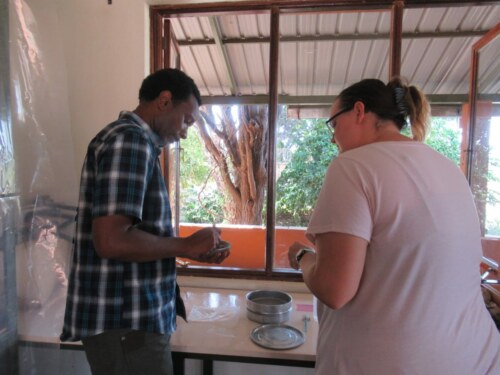
Dr. Gathogo showing Amelia how to crush ask samples with a pestle and mortar.
Tuesday was bound to be an exciting day for the entire team because we visited Lothagam. We headed out a little earlier to explore the landscape before the sun got really hot. It gets up to 36 degrees celsius here! The main purpose for our visit to the Pliocene of Lothagam was to try and locate the basalts, a rock commonly occurring here and try to relate its occurrence to other tectonic activities in the basin. The scorching sun was not doing us any favours as we traversed the expansive area. We however did our best and were back at camp just in time for lunch.
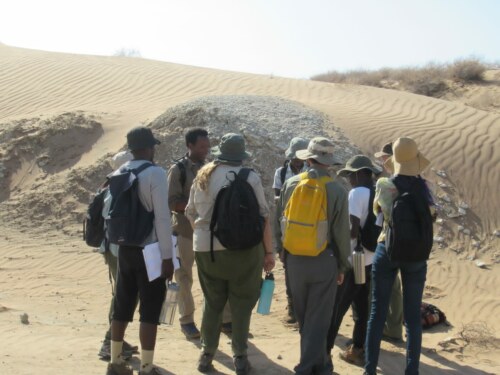
At the sand dunes at the foot of Lothagam.
The better part of Wednesday was spent in the classroom, with Dr Gathogo teaching us about the Paleogeography of the Turkana region. In the afternoon, we had a lab session working to describe two samples, one collected from Lothagam the day before and one from the outcrops nearby.
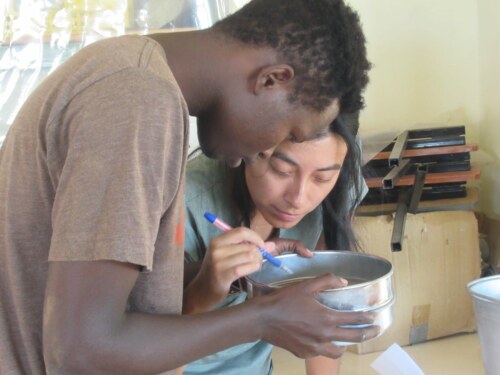
Steve and Flor examining samples.
On Thursday, we reviewed all the topics we had covered during the module with our professor. We left for Napudet in the afternoon where we were set to camp overnight in anticipation for our field visit to the nearby Miocene exposures (Emunyun beds). On arrival, we took a walk to explore the dry riverbed (Loreng’elup laga) we had set camp next to as we awaited dinner.
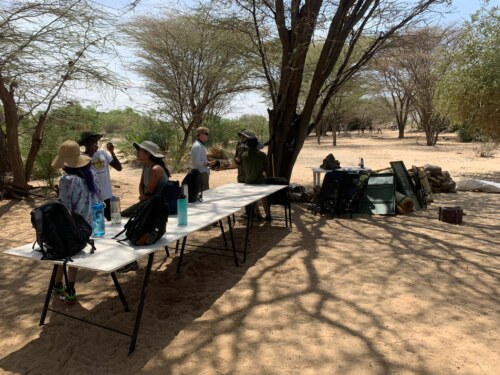
Our campsite under the trees on the Loreng’elup laga
Friday was the day we had all been looking forward to. After breakfast, we headed out to Napudet, a Miocene site famously known for its immense contribution in paleontology. An infant ape, Nyanzapithecus alesi was discovered here in 2014 by John Ekusi, a member from the team headed by the late Prof. Isaiah Nengo. Dr. Gathogo led us through the ancient sediments, reconstructing volcanic activities and depositional events that shaped the landscape. Armed with our recently acquired geological knowledge, we were assigned tasks to interpret, come up with links and draw conclusions on the processes that formed these ancient features. We walked around with Dr. Gathogo and Medina for the better part of the morning, making observations of the outcrops, faults and dykes in the area.
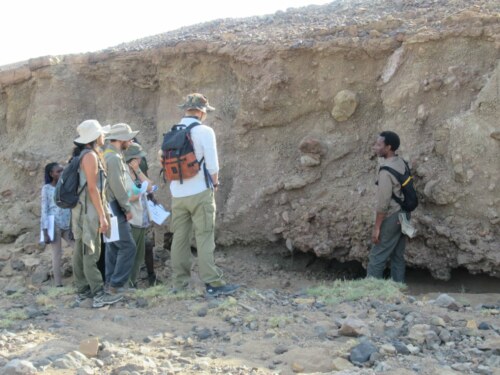
Dragon’s vomit! Dr. Gathogo explains the volcanic processes that result in these deposits.
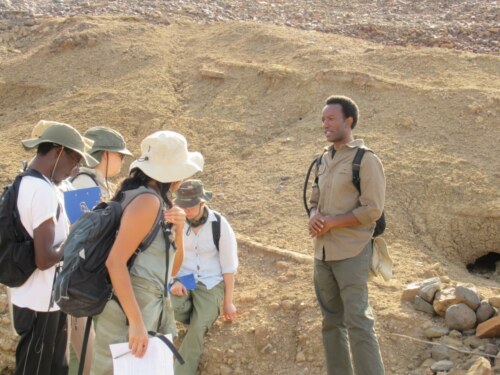
Examining sediments at the site where Nyanzapithecus alesi was found.
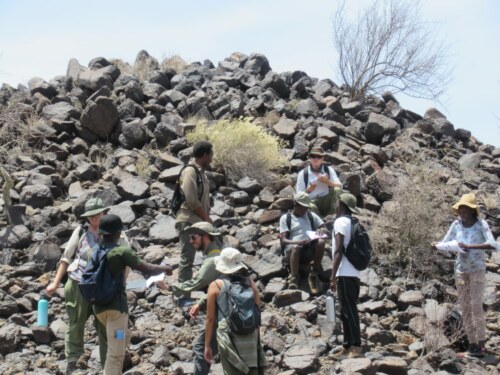
A closer look at mid-miocine basalts.
After the successful fieldwork, we headed back to the camp and afterwards took down our tents, packed up our belongings and made our way back to TBI-Turkwel campus. The afternoon was spent in the classroom reviewing the field trips we had conducted in the course of the study. The geology module came to an end on Saturday evening when we sat for the final examination.
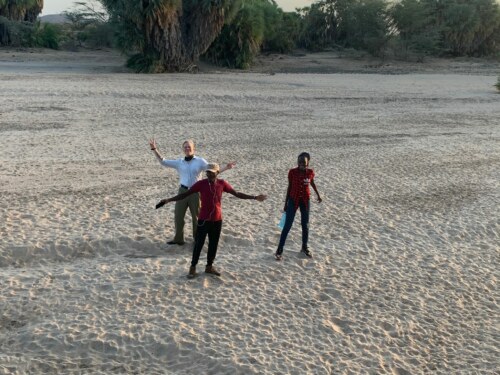
See you next week for the paleontology module!





